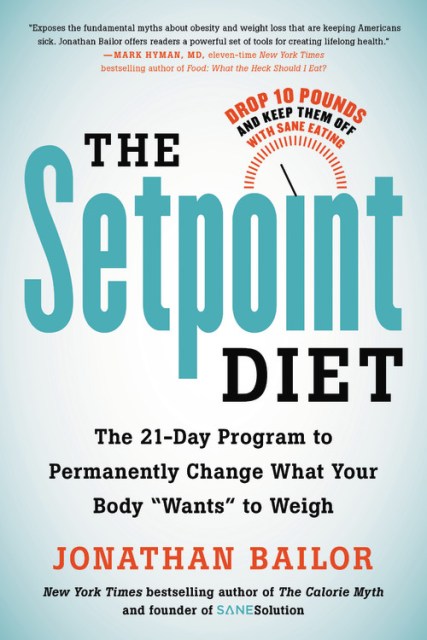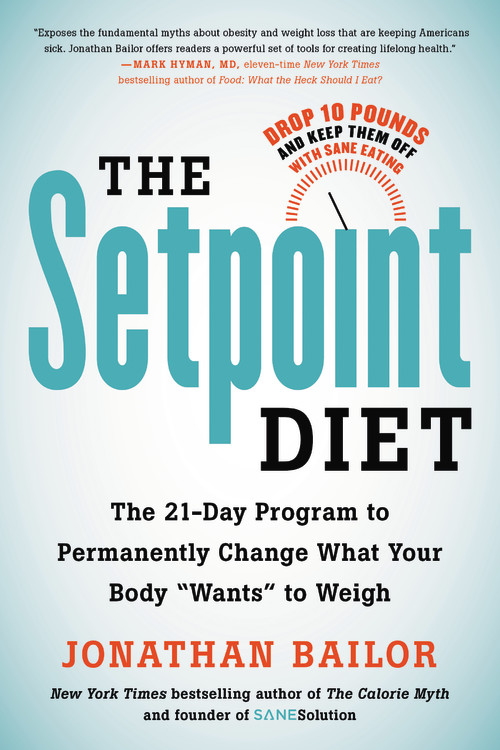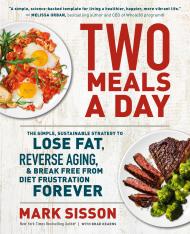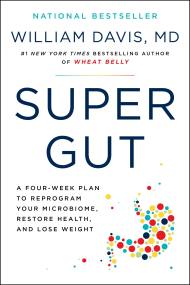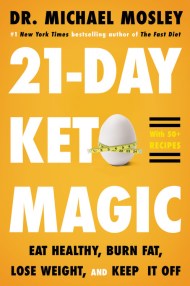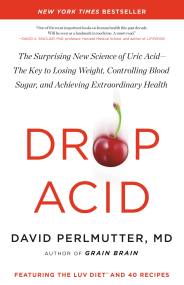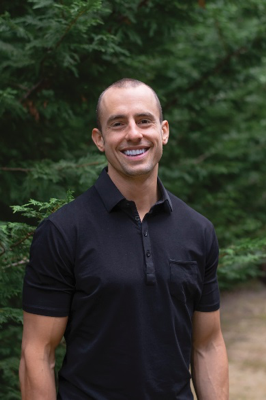Promotion
Use code MOM24 for 20% off site wide + free shipping over $45
The Setpoint Diet
The 21-Day Program to Permanently Change What Your Body "Wants" to Weigh
Contributors
Formats and Prices
Price
$15.99Price
$21.99 CADFormat
Format:
- Trade Paperback $15.99 $21.99 CAD
- ebook $2.99 $3.99 CAD
- Audiobook Download (Unabridged)
This item is a preorder. Your payment method will be charged immediately, and the product is expected to ship on or around December 22, 2020. This date is subject to change due to shipping delays beyond our control.
Also available from:
Your body fights to keep you within a range of about 15 pounds — also known as your “setpoint weight.” New research reveals that you can lower your setpoint and end that battle for good by focusing on the quality of calories you eat, not the quantity. With The Setpoint Diet, you will reprogram your body with a 21-day plan to rev up your metabolism, eliminate inflammation, heal your hormones, repair your gut, and get your body working like that of a naturally thin person — permanently.
The Setpoint Diet is a lower-carb menu that focuses on specific anti-inflammatory whole foods, including tons of produce, nutritious proteins, and therapeutic fats. Its creator, Jonathan Bailor, founded SANESolution, a weight loss company that has reached millions of people. Proven to help you lose weight naturally and maintain it, The SetpointDiet is your new blueprint for healthy living.
Genre:
-
"Exposes the fundamental myths about obesity and weight loss that are keeping Americans sick. By explaining the link between our hormones and our metabolism, Jonathan Bailor offers readers a powerful set of tools for creating lifelong health."Mark Hyman, MD, eleven-time New York Times bestselling author of Food: What the Heck Should I Eat?
-
"I am often asked when there will be a proven prescription for weight loss. This is that prescription."Dr. Theodoros Kelesidis, MD, Harvard and UCLA Medical Schools
-
"Brilliant! An easily understood and applied framework that will change the way you live, look, and feel. Bailor will end your confusion once and for all."Dr. William Davis, MD, #1 New York Times bestselling author of Wheat Belly
-
"Jonathan Bailor cuts through the noise around diet and weight loss and tells it to us straight: The food we eat impacts our biology in the most fundamental yet fixable ways. Our hormones regulate weight loss, and what we eat impacts how they function. Calories? Not the issue."Dr. Sara Gottfried, MD, New York Times bestselling author of The Hormone Cure
-
"A most fascinating and scientifically accurate look at the science of weight loss. The bottom line is this: Conventional 'calories in, calories out' approaches to weight loss are grossly inaccurate and tend to blame the victim. But there is another way. And it works. And it's right here in this book, which I highly recommend."Christiane Northrup, MD, New York Times best-selling author of Goddesses Never Age, The Wisdom of Menopause, and Women's Bodies, Women's Wisdom
- On Sale
- Dec 22, 2020
- Page Count
- 352 pages
- Publisher
- Hachette Go
- ISBN-13
- 9780316483810
Newsletter Signup
By clicking ‘Sign Up,’ I acknowledge that I have read and agree to Hachette Book Group’s Privacy Policy and Terms of Use
